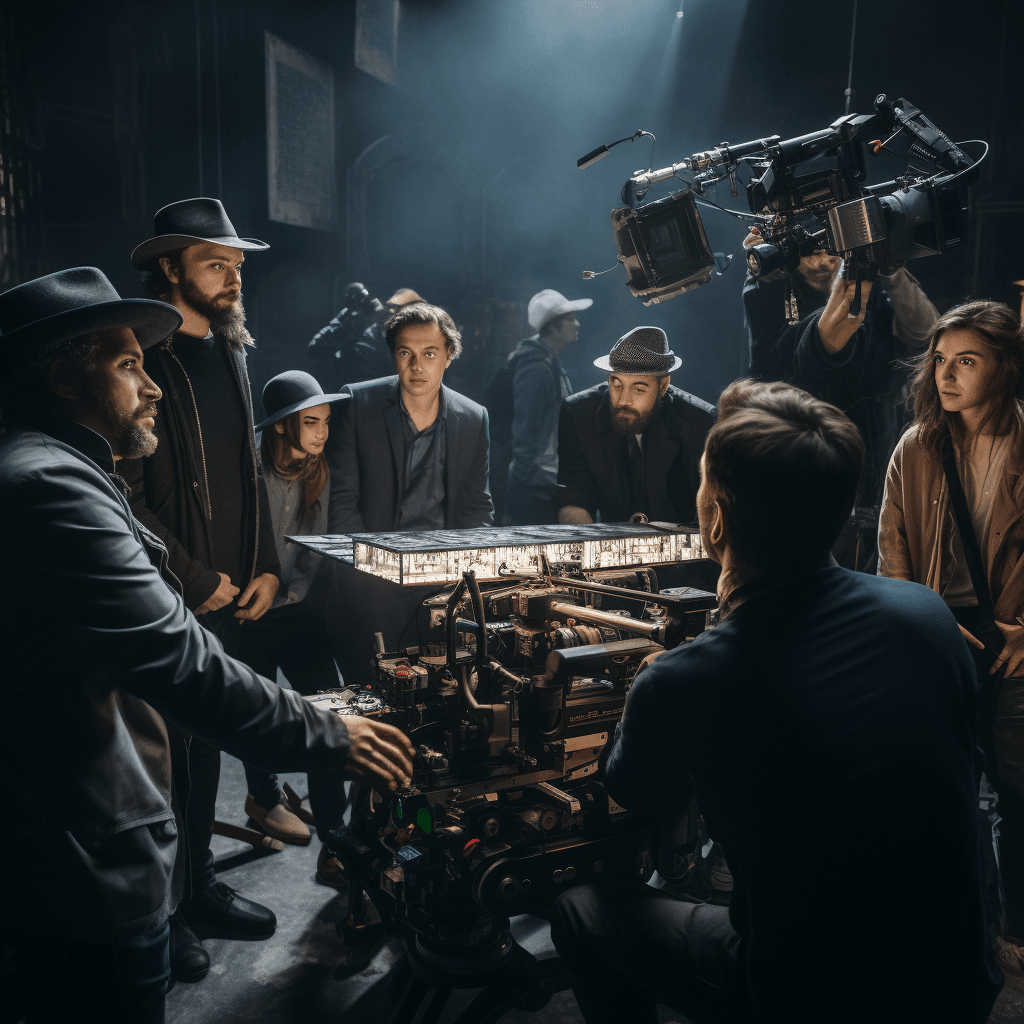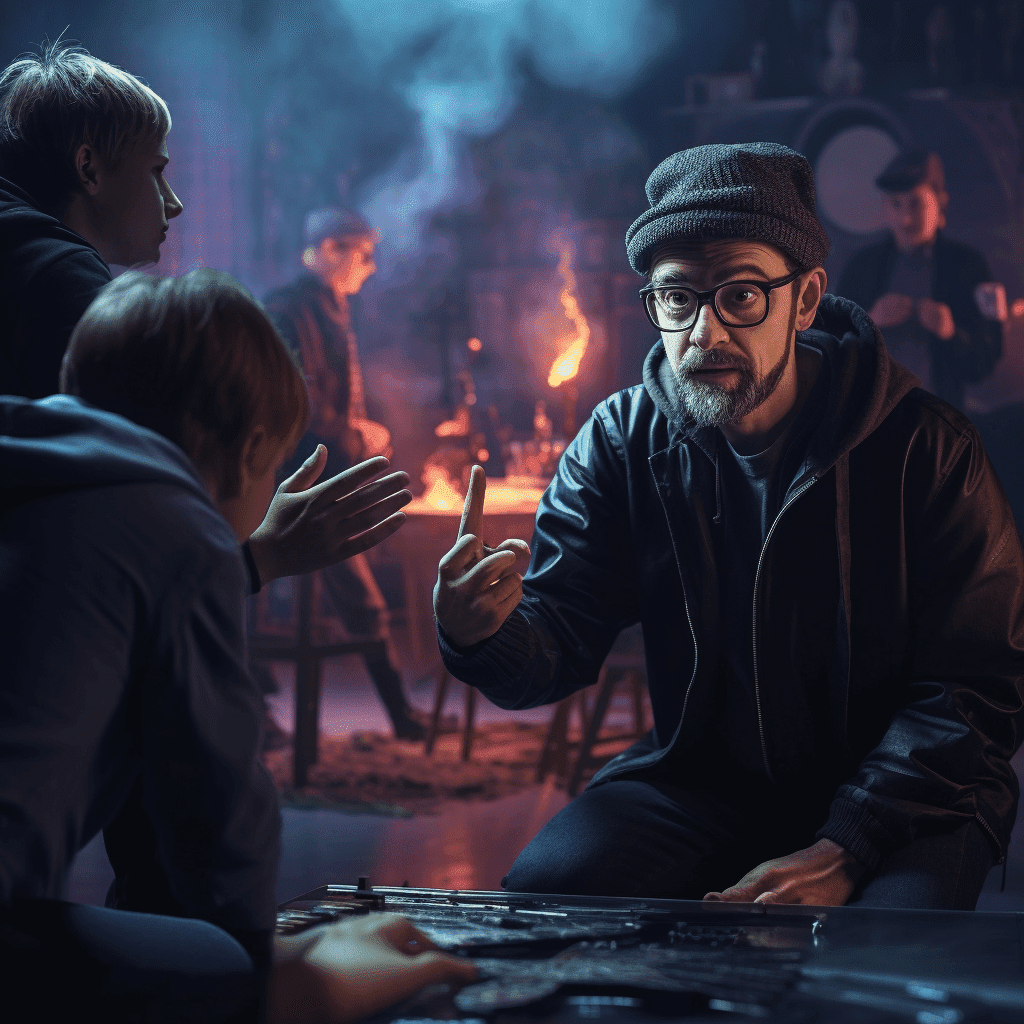
Spellbound 1945

In this chilling thriller, a renowned psychiatrist's world is turned upside down when a mysterious newcomer claims the directorship of her Vermont asylum. As she delves into his troubled psyche, she uncovers a web of deceit, and together they embark on a perilous journey to unravel the truth behind his forgotten past, amidst the shadows of murder and betrayal.
Does Spellbound have end credit scenes?
No!
Spellbound does not have end credit scenes.
Actors
Meet the cast of Spellbound and learn about the talented actors who brought the characters to life. Explore their roles and career highlights.
Links
Explore where to watch Spellbound online. Find reviews, ratings, and detailed movie information on other platforms like Metacritic, Rotten Tomatoes, IMDb or TMDb
Ratings
Discover how Spellbound is rated on popular platforms like IMDb, Metacritic, and TMDb. Explore audience and critic scores to see how this movie ranks among the best.

78
Metascore
7.5
User Score


%
TOMATOMETER

0%
User Score

7.5 /10
IMDb Rating

74
%
User Score
Movie Quiz
Challenge your knowledge of Spellbound with an engaging quiz. Test your memory of the movie’s characters, plot twists, and unforgettable moments.
Spellbound (1945) Quiz: Test your knowledge of the classic psychological thriller 'Spellbound' and its intricate plot twists.
Who is the renowned psychoanalyst at Green Manors mental hospital?
Plot Summary
Get the full story of Spellbound with a detailed plot summary. Dive into its themes, characters, and the twists that make it a must-watch.
At the Green Manors mental hospital situated in Vermont, the alluring yet intelligent psychoanalyst Constance Peterson (Ingrid Bergman) is renowned for her disinterest in the romantic pursuits of her male colleagues, focusing solely on her profession. The institution’s director, the elderly Dr. Murchison (Leo G. Carroll), is facing an involuntary retirement due to an episode of nervous exhaustion, prompting the board to seek a replacement in the form of the distinguished Dr. Edwardes (Gregory Peck), known for his celebrated book on guilt complexes.
Upon Dr. Edwardes’ arrival, an undeniable chemistry sparks between him and Dr. Peterson. However, unsettling occurrences begin to unfold. During their first dinner together, he unexpectedly erupts when he observes Dr. Peterson sketching a swimming pool design on a napkin with her fork. As days progress, their relationship deepens, culminating in a heartfelt declaration of love. Yet, while they embrace, Dr. Edwardes has another alarming reaction to the parallel stripes on her robe. Soon after, he receives a sharp call concerning a distressed patient who attempted suicide in the operating room. While assisting, Dr. Edwardes suffers a serious panic attack and is escorted to his quarters.
As Dr. Peterson tends to him, she discovers a discrepancy: his signature in her borrowed book starkly contrasts with a note he previously wrote her. The man before her cannot be Dr. Edwardes. During their confrontation, he confesses he has no memory of his identity, revealing that he has murdered the genuine Dr. Edwardes and assumed his identity, holding onto only a cigarette case engraved with “J.B.” Trusting him implicitly, Dr. Peterson vows to aid him in unraveling this enigma.
That night, he slips a letter under her door, asserting that he cannot get her involved in his troubles, professing his love as he departs for the Empire State Hotel in New York. The very next morning, police officers arrive at the hospital, alerted by Dr. Edwardes’ secretary, who doubts the voice of the supposed Dr. Edwardes. After confirming the staff’s suspicions, they visit Dr. Peterson, who remains unaware of his true identity, too scared to reveal the letter he left behind.
The following day, she travels to New York, eventually locating him after identifying his handwriting on hotel registration forms — he is now living under the name “John Brown.” Empowered by her psychoanalytic insight, she commits to healing his amnesia. Although J.B. believes he may have killed the original Dr. Edwardes, Dr. Peterson persists in her belief of his innocence, even after recognizing burn marks on his hand that trigger fleeting yet traumatic memories.
In line for tickets at Grand Central Station, J.B. resorts to free association, requesting two tickets to Rome, Georgia, before realizing a policeman is observing them. Consequently, they pivot and board a train heading to Rochester, the hometown of Dr. Alex Brulov (Michael Chekhov), Dr. Peterson’s former teacher and mentor.
While traveling, J.B. gradually recalls being shot down during an Army Medical Corps mission over Italy. Upon arriving in Rochester, they find Dr. Brulov absent but are soon interrupted by two policemen investigating Dr. Edwardes’ disappearance. When Dr. Brulov finally enters, he expresses his aversion towards Dr. Edwardes, casting doubt over his methods. After the police leave, Dr. Peterson introduces J.B. as her husband, prompting a friendly but dubious reaction from Dr. Brulov regarding their situation.
That night, anxiety envelops J.B.. As he confronts a horrifying revelation about his past while mixing shaving soap, he becomes entranced once more and is discovered by Dr. Brulov, who silently sedates him. The following morning, Dr. Brulov discusses his suspicions of J.B.’s potential guilt, but Dr. Peterson ardently defends her faith in him, insisting she could never love a man capable of murder. Despite his initial skepticism, she persuades him to assist in J.B.’s recovery without contacting the authorities just yet.
Dr. Brulov begins therapy with J.B., revealing insights about dreams as clues to hidden truths. What follows is a captivating dream sequence crafted by surrealist artist Salvador Dali, featuring extensive psychoanalytic symbolism that uncovers deeper layers of J.B.’s psyche. As he navigates this dreamscape filled with enigmatic visions, the trio uncovers connections to J.B.’s trauma, leading him to recollect a pivotal ski trip with Dr. Edwardes.
Encouraged by Dr. Peterson, J.B. and she venture back to Gabriel Valley, hoping to unlock the secrets of that fateful trip. Facing his fears, he realizes he unwittingly caused his brother’s accidental death in his childhood. This realization allows him to regain his identity — he is John Ballantyne. Yet, just as he comes to terms with his past, authorities trail them to the valley, having discovered Dr. Edwardes’ body with a bullet wound, implicating John. He faces arrest and conviction for murder, despite Dr. Peterson’s protests of his innocence.
Returning to Green Manors, Dr. Peterson is soon approached by Dr. Brulov, offering his condolences. Meanwhile, Dr. Murchison, now reinstated as the hospital director, inadvertently hints he knew Dr. Edwardes, igniting suspicions in Dr. Peterson. She promptly confronts him, connecting the dots regarding John’s dream and realizing the casino symbolized both Green Manors and the setting of John’s lunch with Dr. Edwardes. Armed with this knowledge, she deduces that Dr. Murchison himself is the true murderer.
In a dramatic confrontation, Dr. Murchison threatens to kill her but, upon her departure, turns the gun on himself in a poignant moment that is visually represented by a vivid flash of red amid the black-and-white narrative.
Ultimately, the story culminates in a tender scene where Constance and John are set to embark on their honeymoon journey, with the wise Dr. Brulov bidding them well, leaving behind the ghost of a tumultuous past as they step towards a hopeful future.
Related Articles
Stay updated on Spellbound with insightful articles, reviews, and explainers. Unpack the movie’s deeper meanings, themes, and ending.
Featured on this page

What's After the Movie?
Not sure whether to stay after the credits? Find out!
Check out our other apps:
Actors
Companies
Latest Movies
© 2025 What's After the Movie?. All rights reserved.





















